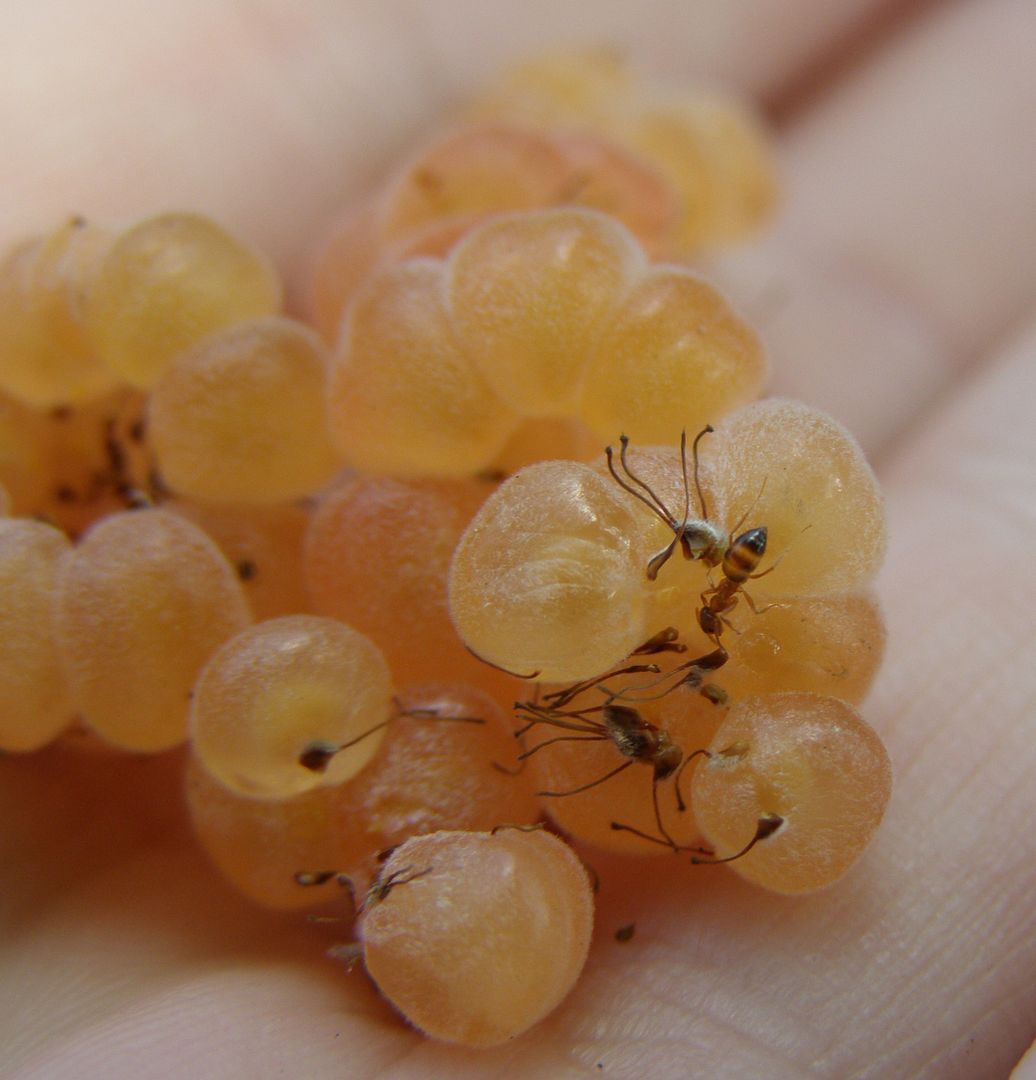
Paratrechina faisonensis, a common ant without a common name, is a small scavenger ant that's been feasting on my raspberries all summer. It's only now that the fall hits when they start to focus heavily on the fruit. Pictured above is one of the orange fruiting varieties. The ones sold in the store are an ugly pale yellow with what looks like black hair poking out of each berry. The ones on my plants were a nice amber color and the black hair effect those things give is completely lost. They're full of juice and very tasty.
Paratrechina species are frequently shipped around the world accidentially and found in flower pots.
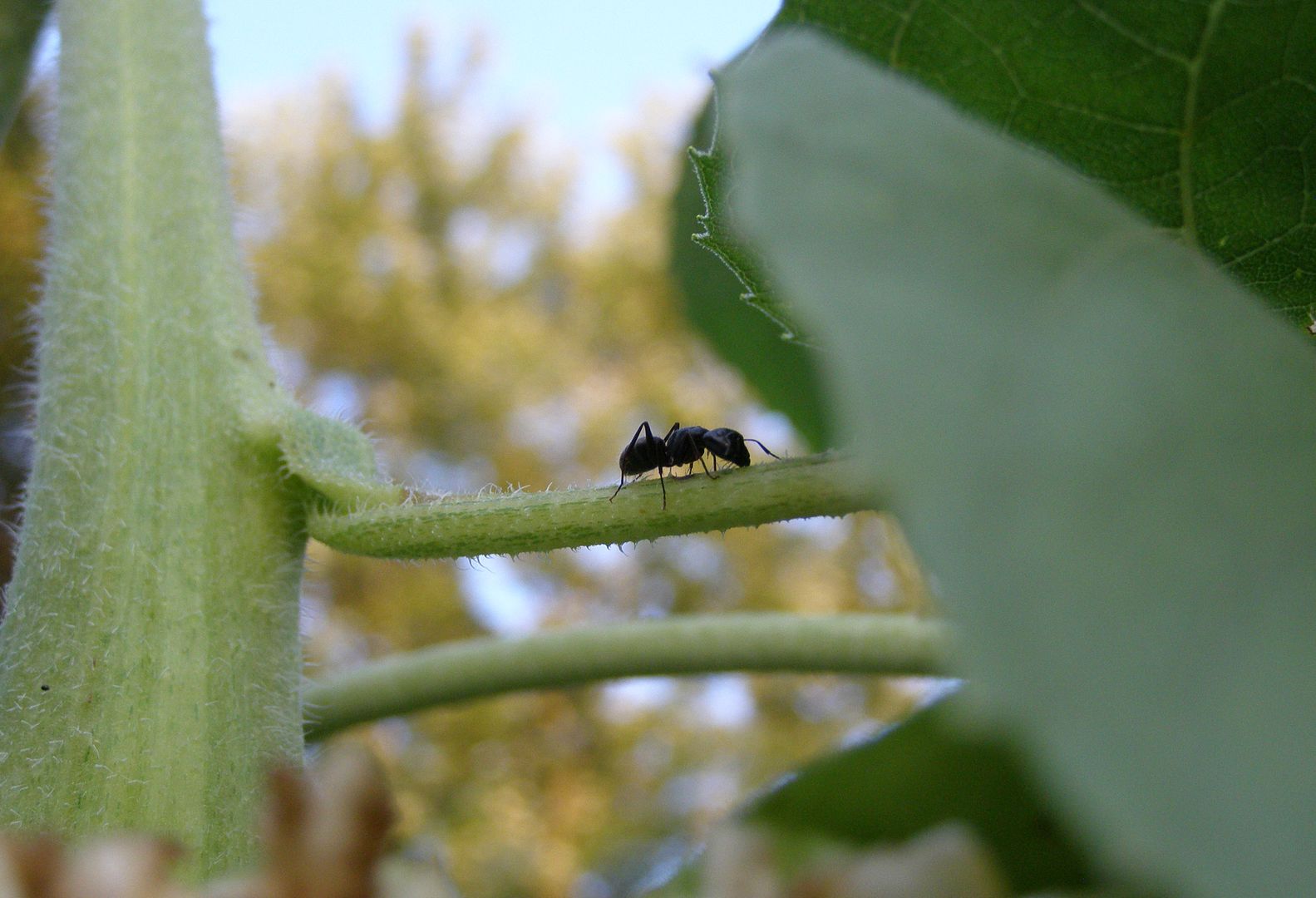
Camponotus pennsylvanicus, The Black Carpenter Ant, can be quite the pest to homes. The real issue though is that they like to nest in wood suffering from extreme water damage... if you have extreme water damage in your home, the ants are the least of your worries. They sometimes do nest in perfectly fine wood but it's a rare occurance.
Camponotus, though the second largest genus of ant in the world with some 600+ species (50 of whome occur in the US and Canada) they lack a metapleural gland! This is one of the traits that disginguishes them from wasps, as well having waist segments, though neither of these two traits are consistant. The gland secretes antibiotics and essentially keep the ant clean. To substitue this Camponotus ants frequently collect plant sap. Pictured above is a major worker sipping some off the sunflowers I grew.
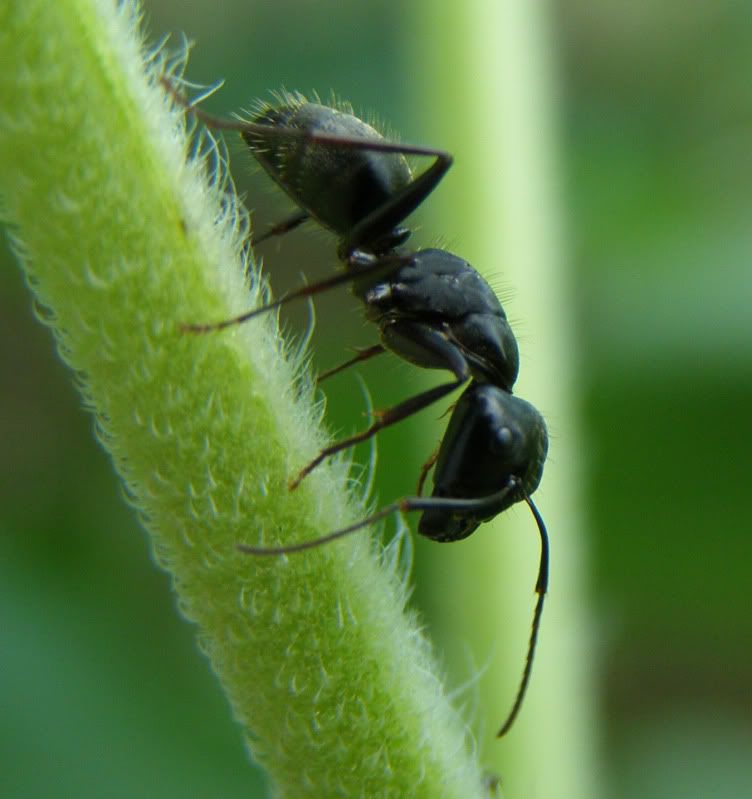
They are among the largest, if not the largest, ant in North America. They are easily identified from the gold/gray fur on the abdomen. They don't occur on the west coast. They forage mostly at night too so massive colonies can often go unnoticed.
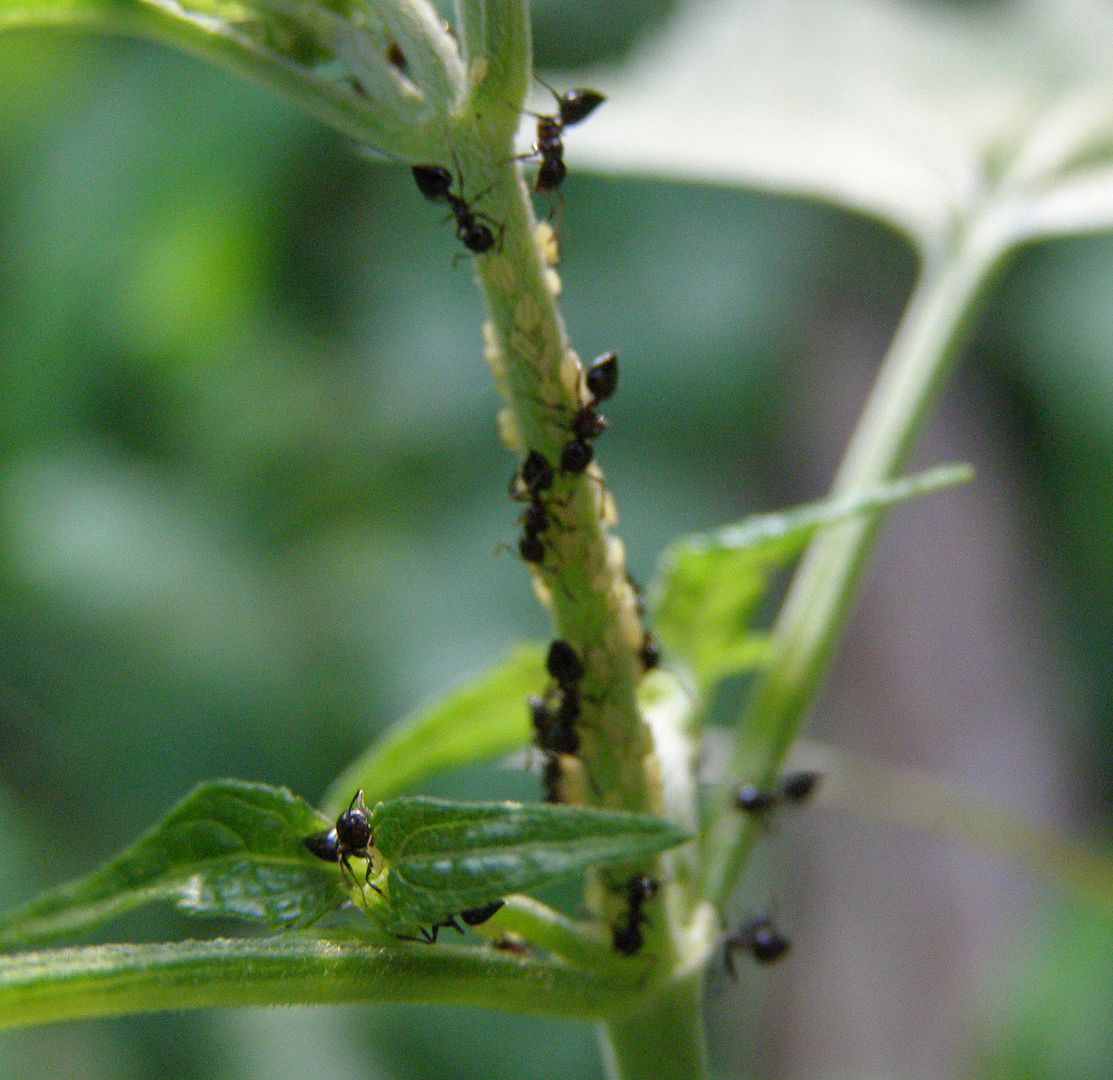
Crematogaster cerasi, is probably our most widely distributed Acrobat Ant in North America. Here a group of them collect honey dew from aphids on some weed out in the yard. As you get farther south (towards Florida, Texas, and California) they become much more diverse. Many of them form special relationships with hollow plants and use them as nests. Up north though, C. cerasi nests in dead wood or hollow structures. Their foraging lines can be extensive. Subcolonies are established because suitable dead wood structures are not common. Foraging trails usually maintain contact with these places though. I'm unsure how many queens per colony.
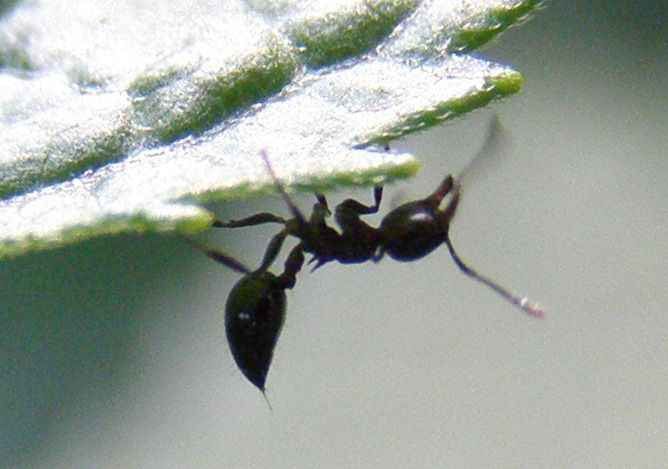
They get the name acrobat ant because they like to sting over head, rather than under. In a sqorpion-like pose, they're almost doing a hand stand. The abdomen appears heart shaped when viewed from above. Their "stinger" is actually limber and used to paint venom on enemies rather than injecting it.